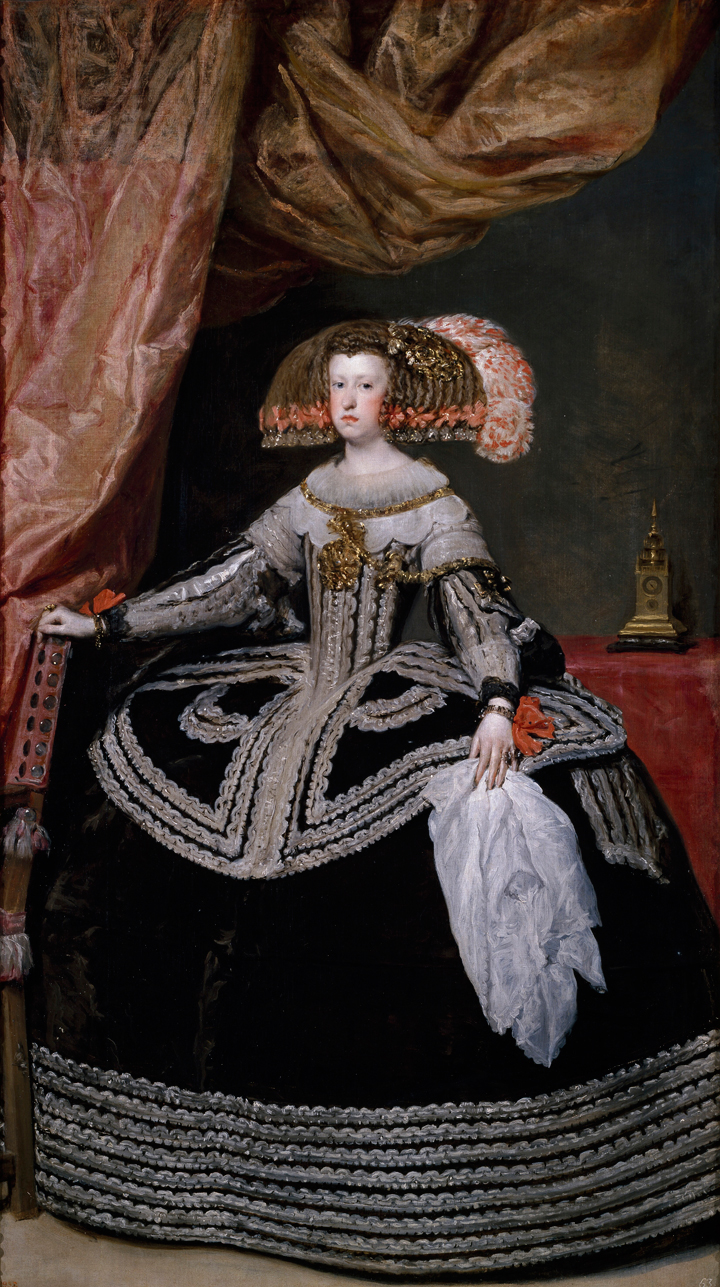Available for Purchase.
"*" indicates required fields
This submission is an inquiry of availability and details but does not guarantee a sale. Thank you for your understanding.

Happy Birthday to Diego Velázquez, who was baptized this day in 1599. Velázquez is truly a painter’s painter and there are so many ways in which he has inspired my own practice.
Foremost, his brush work and color harmonies! The multitude of reds, pinks, oranges and blues in Innocent’s cape is master class in rendering a fully alive form. You can nearly feel the silky fabric through the sheen created by active brushwork in the highlights of the folds.
As a figurative painter, I appreciate the tips Velázquez offers on staging complex groups of figures. The foreground of The Surrender at Breda (top) contains more than 20 figures (and two horses), grouped in two to form symmetrical, though not rigid, compositional order. The grouping reinforces the combative nature of war; two armies—Spanish and Dutch—even in surrender opposing each other on the canvas. In Velásquez’s hands, only a few figures are spotlighted, pulled from the crowd one imagines for their importance and as a break to the monotony of the painted crowd

Velázquez has made some incredible compositional choices that make the painting incredibly dynamic, despite the relatively narrow visual plane the figures seem to occupy. Generally, he has organized the composition into a pyramid man backlit in the doorway at its apex. This is the place of greatest value contrast, so our eye goes right there. then skipping forward over the characters, before coming to rest on the most important focal point in the center of the canvas. The edge of the canvas on the left might have hemmed the group into a claustrophobic space, were it not for the light bar of the window on the oppose side which gives the space some breathing room. The painted canvas corner also begins the sense of deep space that continues all the way to the figure in the back.
What I find most intriguing is the upper half of the Las Meninas.canvas. It’s virtually empty; in the shadows, it lacks clear definition. This functions as visual relief from all the business below. But is it also a comment about the fleeting nature of human existence, a reference to the nothingness that is above us all, no matter our station in this life?

As a portrait painter I appreciate that Velázquez captured all subjects between ruin and royalty with equal attention and insight. He was 19 (!) when he painted an old woman cooking for her grandson (?) and surrounded her with all manner of equipment. I’m envious of the skill with which Velázquez rendered each item, so perfectly that we immediately recognize clay from copper. Were these actually in the woman’s collection or did the painter stage them to show off? But really I don’t begrudge him for displaying his considerable painting chops.
Which would be put to full use in his stunning portrait of Pope Innocent X. Every time I look at this portrait, I’m struck with a different emotional interpretation of the Pope’s stare.

I marvel at the economy with which Velázquez created the shrouded head of Mars—just a few notations on the helmet, suggestion of mustache and two eyes and swipe of highlight on the chin. The resulting mystery keeps the viewer’s imagination engaged.

Velázquez was an unsentimental portraitist. The Nun Jeronomina scrutinizes us with an unflinching gaze. Beware! This woman wields the cross like a weapon. And, if that weren’t enough, the inscription above her sternly advises: “It is good to await the salvation of God in silence.”

And, finally, what would a post on Velázquez be without a Habsburg?

Like most of her Habsburg relatives, Queen Mariana was no looker. But she was Queen, second wife to Philip IV, whose court Velázquez painted for 30 years and who had made the painter’s reputation. (Mariana was also mother to Infanta Margaret Theresa, the focus of Las Meninas.) Quite cleverly I think, Velázquez distracts the viewer from the Queen’s visage by focusing on the intricate opulence of her dress.
Diego Velázquez, I salute you!
Velázquez at the Metropolitan
Velázquez at the Prado
Velázquez at The National Gallery
Breda, Holland
Peter Schjeldahl on Las Meninas
[cool_tag_cloud on_single_display=”local”]

your writing style is so clear, humorous and educational…….all in a few sentences!
Many thanks! It’s a treat to return to writing about art.